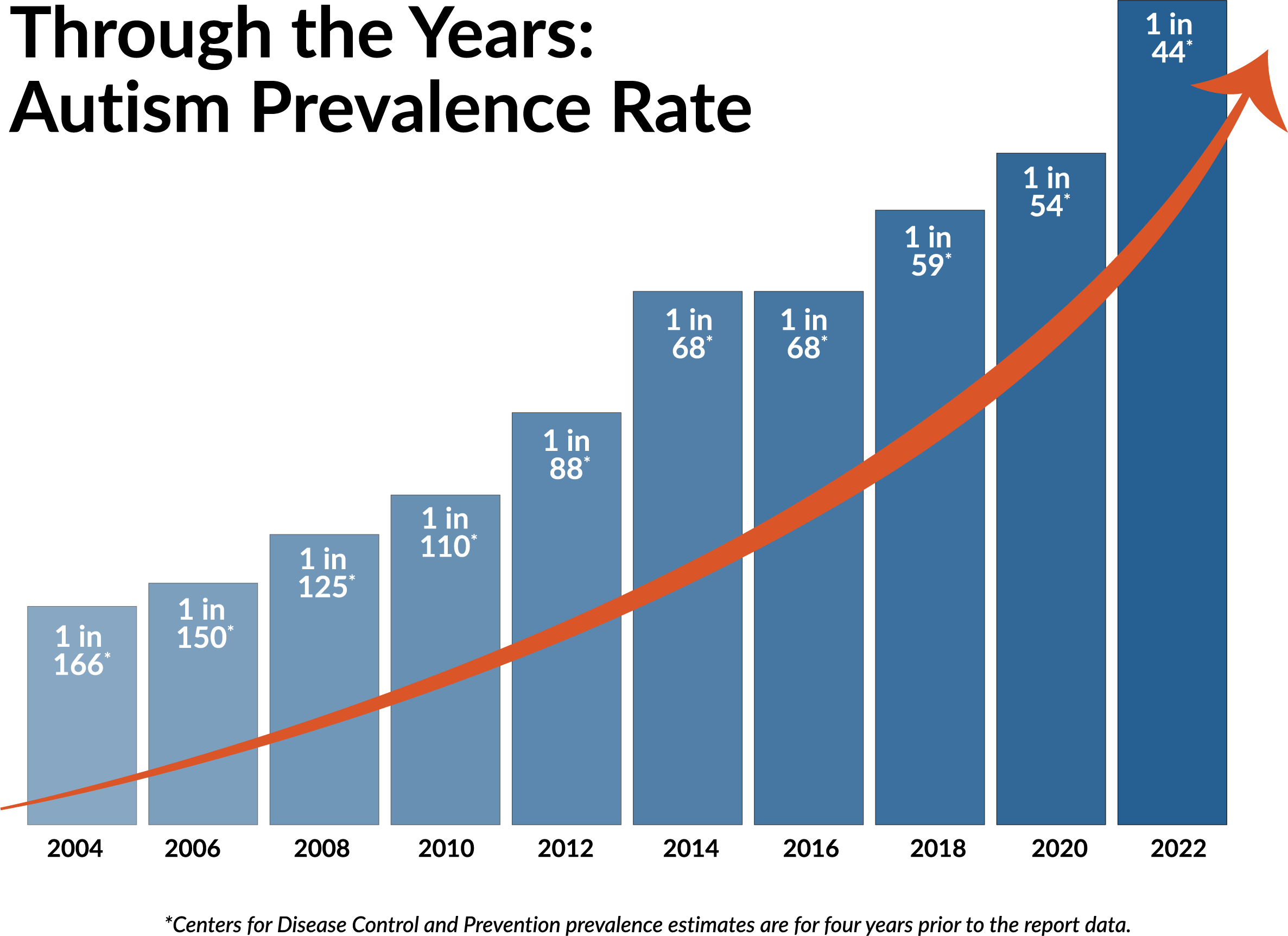The Centers for Disease Control and Prevention (CDC) released new data from the Autism and Developmental Disabilities Monitoring Network (ADDM) reporting about 1 in 44 children were diagnosed with ASD.
These numbers, which were released in December 2021, suggest more U.S. children are being diagnosed with autism—up from 1 in 54 in March 2020.
Data are based on 11 ADDM Network sites including Arizona, Arkansas, California, Georgia, Maryland, Minnesota, Missouri, New Jersey, Tennessee, Utah, and Wisconsin.
KEY FINDINGS (BASED ON 8-YEAR-OLD CHILDREN )
- Boys were more than four times as likely to be identified with ASD as girls.
- Per several sites, the percentage of Hispanic children identified with ASD was lower compared to Black or White children.
- In children identified with ASD who had an intelligence quotient (IQ) scores available, approximately one-third (35.2%) also had an intellectual disability.
- More children who were born in 2014 (1.36%) received an ASD diagnosis or ASD special education classification by 48 months of age compared to children born in 2010 (0.89%).
- In Arizona, key findings indicate that 1 in 40 children were identified with ASD up from the previous rate of 1 in 71 children.
Additionally, findings show that 72% of 4-year-old children with ASD in 2018 received a developmental evaluation by 36 months of age.
“I am not surprised that the rate has increased since the last report,” says SARRC Chief Science Officer Christopher J. Smith. “We work very closely with the pediatric community to improve early screening and access to diagnosis. The CDC also changed its method of surveillance, which affected the most current report. These statistics may be the most accurate report yet. These combined efforts may have a significant effect on more children getting evaluated early.”
Smith shares that other methods of surveillance, like those that collect data from more than 100,000 families across the whole country and include children up to age 17, have reported higher rates than the CDC estimates. Further, surveillance projects in other countries have reported rates as high as 1 in 30.
"While the number of children getting evaluated by age three has improved, it is still troubling to see that roughly 30% are not getting evaluated early,” says Dr. Smith. “We know the importance of early intervention. If children don’t have a diagnosis of autism, it’s unlikely they are getting the treatment they need. This means they are not getting effective, evidence-based, and medically necessary treatment, and it will be more difficult for them to reach their optimal level of functioning.”
SARRC is committed to lowering the age of diagnosis in Arizona and is currently working with healthcare providers in the state in an effort to shorten a family's time between an initial autism screening by a provider and a formal autism diagnostic evaluation.
“Ultimately, the goal is to have all children screened for ASD earlier, lowering the American Academy of Pediatricians’ recommended age of screening from 18 and 24 months to 12 months, and to have children with ASD identified and in therapy before the age of 3 in order to promote optimal outcomes,” says Smith.
Source: Centers for Disease Control and Prevention
LEARN MORE ABOUT THE EARLY INTERVENTION SERVICES AVAILABLE AT SARRC
- Do you suspect autism? Learn about SARRC’s Diagnostics Services Program »
- Through our Easy Access Autism Screening program, access a fast developmental screening with our team: Learn more »
- Attend Milestones, a free program offering information on developmental milestones for parents of infants ages 6 to 18 months: Learn more »
- Attend Free Online Family Orientation, which connects parents to current information and resources related to ASD: Learn more »

